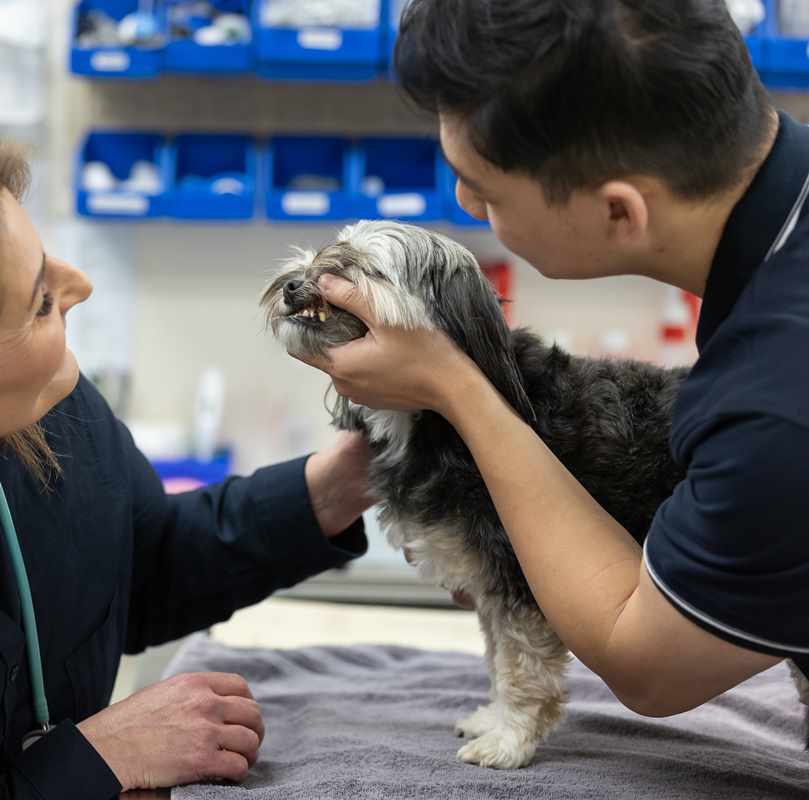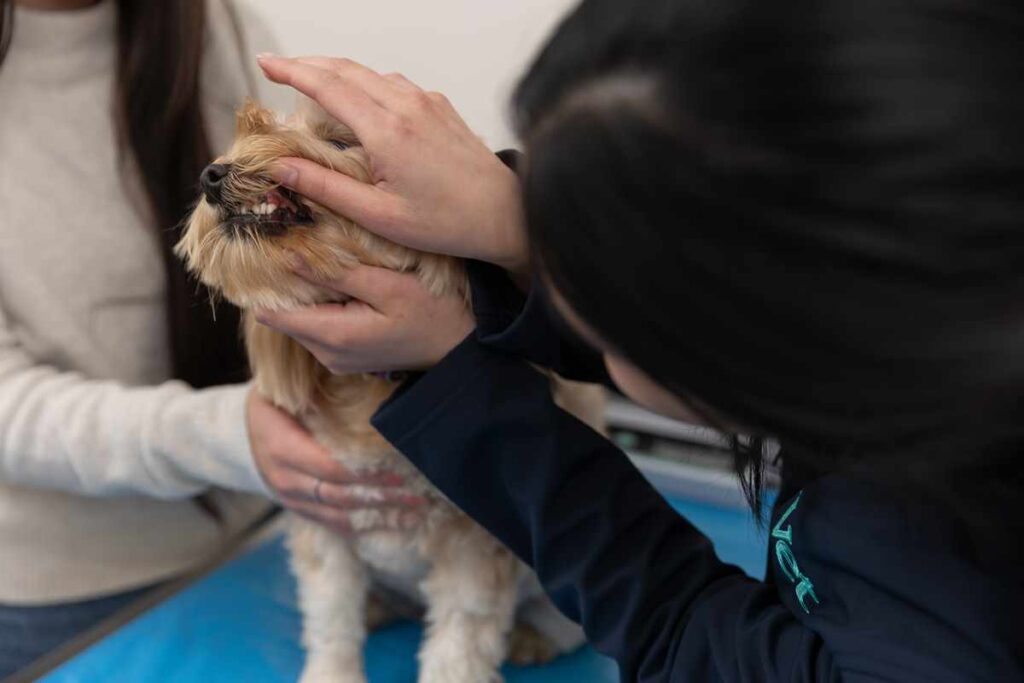-
National Pet Dental Health Month: how to prevent dental disease in our dogs and cats
August 3, 2023
PRESS RELEASE

→ Read now: The new cat treats helping dental disease and anxiety in cats
August is National Pet Dental Health Month, and pet owners are being urged to focus on an often-overlooked aspect of pet care—oral health.
The health of our pets’ teeth and gums is essential not just for their comfort but also for their overall well-being.
Yet, despite its importance, dental disease remains a widespread issue among Australian pets.
In Australia, a staggering 70% of cats and 80% of dogs will suffer from some form of dental disease by the time they are just three years old.
Certain breeds, such as Bulldogs, Shih Tzus, Pomeranians, and Greyhounds, are particularly prone to periodontal disease due to factors like mouth structure, facial shape, and even genetics.
Understanding dental disease in dogs, cats
Dental disease, especially periodontal disease, is a progressive condition that affects a pet’s gums, teeth, and the surrounding bone.
This condition can be excruciatingly painful, yet pets often hide their discomfort, making it challenging for owners to detect.
Petstock Vet, Dr Sasha Nefedova, says this is why it’s important for owners to watch out for any changes in their pet’s behaviour that could be masking oral pain.
“When we (the pet parents) have a toothache, we usually don’t scream in pain about it; it’s more common that we become quiet or change our normal behaviour – and this is the same for our pets,” says Dr Sasha.
Dr Sasha adds that because owners can’t see any visible signs of disease, they believe their pet has good dental health.
Unfortunately, she adds, this is causing such high numbers of cases annually.
“It’s a natural instinct to respond to what we can see, but it comes down to education and knowledge.
“There may be small signs such as blood, plaque, and inflammation but as it’s not so visible, it often causes owners to think their pet doesn’t need routine dental care.
Symptoms of dental disease can include bad breath, a buildup of plaque and tartar, loss of appetite, difficulty chewing, and bleeding gums.
If left untreated, it can lead to tooth loss and significant discomfort, potentially impacting your pet’s quality of life.
That’s why early detection and treatment are crucial.

Dental disease in dogs is a growing concern that vets are seeing frequently (image supplied)
Keeping your pet’s teeth and gums healthy
While many pet parents might be hesitant to clean their dog or cat’s teeth, Dr Sasha says that maintaining their oral health is actually a lot easier than you might think.
“There are lots of treats and products out there for pet parents who are not confident in brushing their pets’ teeth that don’t require you to put your hands in your pets’ mouth.
“In this case, I would recommend taking advantage of Petstock’s free 15-minute free dental checkup with a nurse to ensure pet parents aren’t missing the unseen.
“While you’re there, ask about products that can help prevent issues down the track.
Dr Sasha adds that maintenance and early intervention can prevent any dental disease in pets from worsening.
And, it’s crucial to avoiding more severe complications and expensive treatments down the line.

Vets see a large number of cases of dental disease in cats, so it’s important to take them for routine check-ups (image: supplied)
Dr Sasha’s top tips for keeping your pet’s teeth in top condition:→ Start a brushing routine
Brushing your pet’s teeth regularly is the most effective way to maintain their oral hygiene. Starting this routine when your pet is young is ideal, but it’s never too late to begin. For older pets, introducing tooth brushing gradually can help them adjust.
Use a toothbrush specifically designed for pets, which is softer and less abrasive than human toothbrushes. Pet-friendly toothpaste is also essential, as human toothpaste often contains xylitol, an artificial sweetener that is toxic to both cats and dogs.
For pets who are resistant to brushing, you can also consider other products such as dental wipes, mouth freshening water additives, or fresh breath foam. If you’re unsure about which products to use, consult your vet or ask for advice at your local Petstock store.
→ Dental treats for dogs; toys that help clean pet’s teeth
Dental toys and treats are a convenient way to help maintain your pet’s oral hygiene.
These products are designed to remove plaque and tartar as your pet chews, making them an excellent option for busy owners.
They’re not just practical—they also provide mental stimulation and enjoyment for your pet.
However, it’s essential to supervise your pet while they use these toys and treats to ensure they don’t break off pieces that could cause harm.
→ Consider a dental diet
Your pet’s diet plays a significant role in their dental health. Specially formulated dental kibble is designed to help clean your pet’s teeth as they eat, reducing plaque and tartar buildup. These kibbles are often larger and more abrasive than regular kibble, encouraging your pet to chew more, which can aid in cleaning their teeth.
Before changing your pet’s diet, it’s essential to consult with your vet to ensure it meets all of your pet’s nutritional needs while also benefiting their dental health.
→ Professional cleaning
Even with the best home care, some tartar can only be removed through professional cleaning. It’s recommended that pets receive a professional dental clean once every six months. This procedure requires anaesthesia and a prior dental check, so it’s important to discuss it with your vet to ensure it’s the right option for your pet.
Professional cleanings allow vets to thoroughly clean your pet’s teeth and address any problems that aren’t easily visible or treatable at home. Regular professional cleanings, combined with good home care, are the best way to prevent dental disease.
How to check your pet’s teeth for dental disease
It’s important to regularly check your pet’s teeth for signs of dental disease.
Here’s a simple guide:
-
- Focus on the corner of their mouth, where the top and bottom lips meet below their ears. This area is often a hotspot for tartar buildup.
- Gently push apart the lips with your index finger and thumb to get a clear view of the premolars and molars. These teeth are where the most severe dental disease often occurs.
- Look for signs of discolouration, cracks, or brown tartar. These are indicators of dental disease that require veterinary attention.
- Check the gums as well. Healthy gums should be a consistent soft pink. Red, inflamed gums, or a red line where the gum meets the tooth, indicate that your pet’s immune system is fighting off infection.
Dental Health Facts
Dogs have 42 teeth, cats have 30.
Rabbit teeth continuously grow.
Aggressive chewing on hard objects can break dog’s teeth.
Good dental hygiene can add 2-4 years to your pet’s life.
Pets often hide signs of dental pain.
Dental health is a crucial part of your pet’s overall well-being. By incorporating regular brushing, using dental toys and treats, considering a dental diet, and ensuring professional cleanings, you can help prevent dental disease and its associated complications.
This National Pet Dental Health Month, listen to experts and take the time to evaluate your pet’s dental care routine.
Early preventative measures are key to avoiding a lifetime of discomfort for your pet and reducing the likelihood of costly veterinary bills.
As always, consult with your vet for personalised advice.
A healthy smile is a vital part of a happy, healthy life for your pet.
READ MORE ON ANIMAL FRIENDLY LIFE!
-



